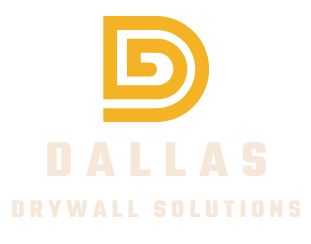Drywall Repair Services
Dallas Texas

Drywall Repair
One of the most common forms of drywall repairs involves patching up holes or cracks. There are several tricks to using an epoxy patch to make sure the repair goes on smoothly and looks great after it is completed. If you want to save yourself some time when trying to figure out how to do it yourself, then it is best to contact a local handyman or home improvement store for advice. Dallas Drywall Solutions will be able to help you decide what type of patch will work best based upon the type of damage that has been done and where the damage is located. However, if the problem seems too big or too numerous to handle, then it is best to hire a contractor to handle the job for you. We are among the best companies that offer drywall repair in dallas TX and you'll not need to search wall repair companies near me again after working with us.
Walls usually take drywall repair a bit easier than ceilings because there is not as much space to move around and fix things. If your wall has been damaged by water, then you should still be able to make drywall repairs to it. The first thing you need to do is to cut a "counterweight" into the wall. This will give the repaired area as a resting place for the compound while it cures. Once the compound has dried up and the patch has cured, you can move the wall back into place. You can do this with plywood or with particle board depending on how much work needs to be done.
One of the most common types of drywall repair problems occurs when someone forgets to nail the pieces together. Many times, the nails will have rusted through and the holes will be filled in but the problem still exists. A good way to avoid this problem is to purchase dowels that you can use to anchor the nails. The dowels can be purchased at any hardware store or home improvement store. Once you have used the dowels in the holes and patched the areas, then you can start to nail the patch up. You may need to add some filler to make sure that the drywall has dried before adding the final touches.
Sometimes drywall sheets become distorted or move slightly in the hole. These issues can easily be fixed by cutting out the damaged area and smoothing it with a putty knife. Once the patch has been applied and it has dried up, then you can fill in the remaining spaces between the drywall and the sheet by using the same type of putty knife again. This should help to make the repaired area to match the rest of the house. We recommend always hiring a professional dry wall repair service like us for this job so you get the best possible result!
Spotting Drywall Damage:
Drywall, also known as gypsum board or sheetrock, is a fundamental component of modern construction. It forms the visible interior surface of most walls and ceilings in residential and commercial buildings. While it provides a smooth and even surface, drywall can be susceptible to various types of damage over time.
Some of these issues may not be immediately apparent, but spotting them early is crucial to prevent further deterioration. Let's shed some light on common types of drywall and ceiling damage, including the hidden ones, and provide you with tips on how to identify and address them. The cost to fix drywall hole or damage can vary depending on the circumstances
Common Types of Drywall and Ceiling Damage
Surface Cracks: Superficial cracks on the drywall and ceiling surfaces often result from settling or minor shifts in the structure.
They are usually cosmetic but should be addressed to prevent them from getting worse.
Nail Pops:
Nail pops occur when the fasteners (usually screws or nails) used to secure the drywall to the studs push through the surface. This can create small, raised bumps on the wall or ceiling.
Water Damage:
It is a serious concern and can result from leaks, plumbing issues, or flooding. It may manifest as staining, softening, or bulging of the drywall or ceiling.
If you're facing issues due to water damage, searching for "water damage drywall repair near me" can help you find local experts. Additionally, typing "wall repair contractor" into your search engine will provide options for professional repair services in your area.
Mold and Mildew:
High humidity or water exposure can lead to the growth of mold and mildew on the drywall and ceiling surfaces. This is often characterized by discoloration and musty odors.
Peeling Paint or Wallpaper:
If paint or wallpaper begins to peel away from the drywall or ceiling, it can indicate an issue with adhesion or moisture penetration.
Dents and Dings:
Everyday wear and tear can result in minor dents and dings in the drywall, especially in high-traffic areas.
Drywall Tape Issues:
The tape used to cover seams between drywall panels may become loose or bubble, creating visible imperfections on both walls and ceilings.
Structural Cracks:
While less common, structural issues can lead to more significant cracks in the drywall and ceiling that may indicate a more serious problem with the building's foundation or structure.
Identifying Hidden Drywall and Ceiling Damage
Hidden drywall and ceiling damage can be challenging to spot because it is concealed beneath the surface. However, there are telltale signs and methods to help uncover these issues:
Inspect for Paint Irregularities: Pay attention to areas where the paint appears discolored, bubbling, or peeling on both walls and ceilings. These could be indications of water damage or underlying issues.
Check for Soft Spots: Gently press on different sections of the wall and ceiling, especially near potential water sources like sinks and showers. Soft or spongy spots can signal water damage or mold growth.
Listen for Hollow Sounds: Tap the wall and ceiling lightly with your knuckles. A hollow or different sound in some areas could indicate voids or separated drywall layers.
Look for Sagging or Uneven Surfaces: If you notice that the wall or ceiling has a sagging or uneven appearance, it may suggest structural problems or water damage that has weakened the drywall.
Examine Baseboards and Crown Molding: Inspect the areas where the walls meet the floor and ceiling. Gaps or separations between the molding and the drywall could indicate movement or settling.
Inspect Electrical Outlets and Switches: Remove outlet and switch covers to check for any signs of moisture, discoloration, or loose drywall around these fixtures on both walls and ceilings.
Use an Infrared Camera: Infrared cameras can reveal hidden moisture issues by detecting temperature variations on the surface of both walls and ceilings. Cold spots may indicate areas of moisture infiltration.
Consider Hiring a Professional: If you suspect hidden damage but are unsure how to proceed, it's advisable to consult a professionaldrywallcontractor or a home repair specialist who can conduct a thorough assessment.
If you want to know about why good drywall for ceiling is important, check out The Importance of Good Drywall for Ceilings.
Addressing Drywall Damage
Once you've identified the damges. it's essential to address it promptly to prevent further deterioration and potential health hazards. Depending on the type and extent of the damage, you may need to: Repair minor cosmetic issues, such as nail pops, surface cracks, and dents, using patching compound and paint. Alternate method for painting is drywall texturing that adds texture and visual interest to walls, enhancing their appearance and covering imperfections.
Address water damage by identifying and fixing the source of moisture, replacing damaged drywall, and addressing mold issues if present.
Seeking Professional Help
Seek professional assistance for wall repair services from a drywall contractor or home repair specialist for your drywall project because of structural cracks or significant issues that may require more extensive repairs. Doesn't matter if you're looking for ceiling drywall repair contractor or for another spot professionals houls be the way to go!
Spotting hidden drywall and ceiling damage is a vital aspect of home maintenance. Regular inspections and vigilance can help you identify and address issues early, preventing costly repairs down the road. Whether you're a homeowner or a tenant, understanding the common types of drywall and ceiling damage and knowing how to identify hidden problems can contribute to the longevity and safety of your living space.
Additionally, drywall finishing is the importance step to even out the surface. For further insights into drywall services, don't hesitate to explore our blog page which has comprehensive guides on drywall painting, drywall tape & bed and wall hole repairs. So are you ready to work with the best companies for drywall repair in dallas TX? Why wait! just gie us a call
WHY CHOOSE US
With over 15 years experience and a real focus on customer satisfaction, you can rely on us as your drywall repair contractors for your next project. We provide professional drywall repair and installation services with a real focus on customer satisfaction.

